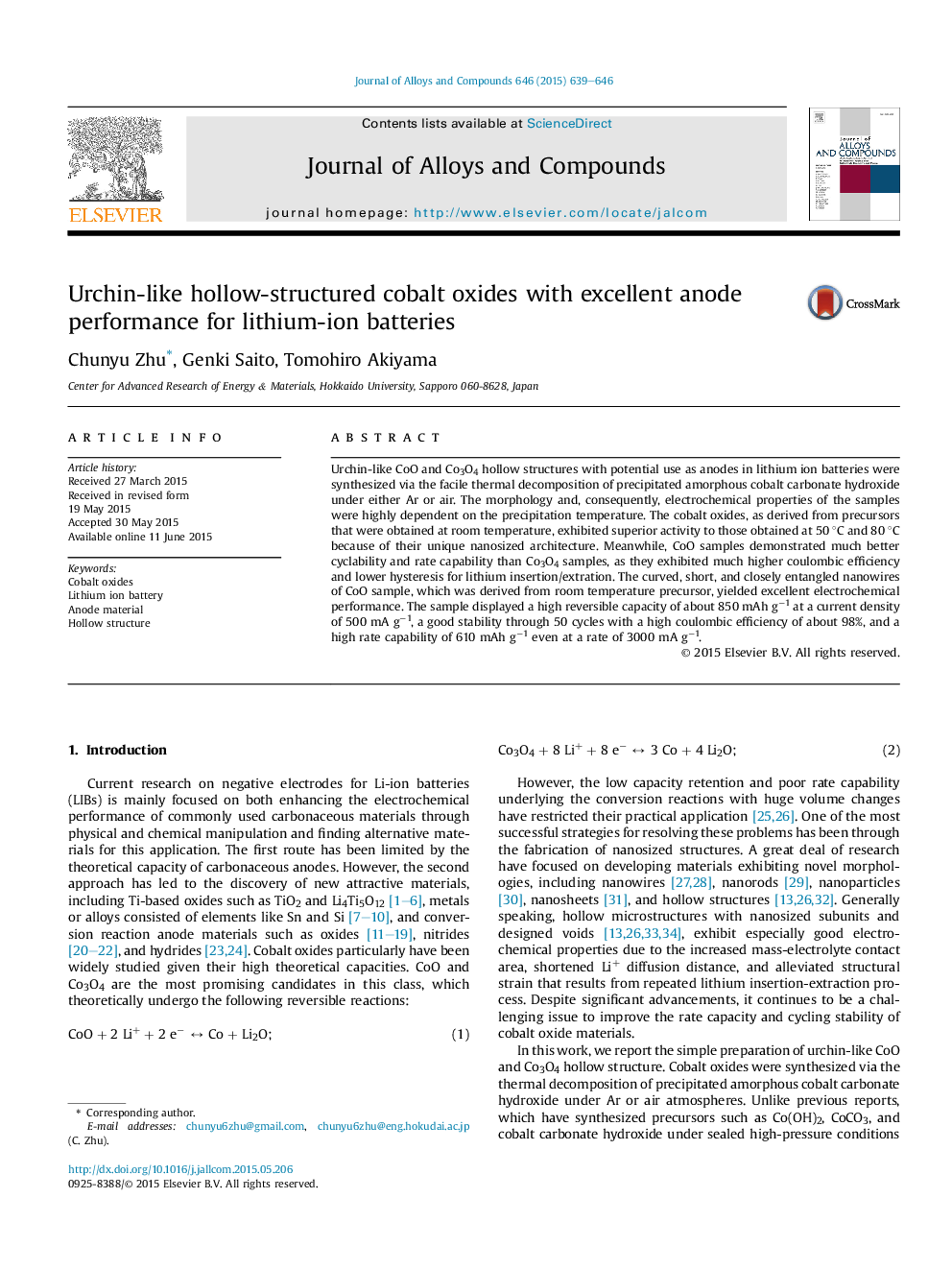| Article ID | Journal | Published Year | Pages | File Type |
|---|---|---|---|---|
| 7998310 | Journal of Alloys and Compounds | 2015 | 8 Pages |
Abstract
Urchin-like CoO and Co3O4 hollow structures with potential use as anodes in lithium ion batteries were synthesized via the facile thermal decomposition of precipitated amorphous cobalt carbonate hydroxide under either Ar or air. The morphology and, consequently, electrochemical properties of the samples were highly dependent on the precipitation temperature. The cobalt oxides, as derived from precursors that were obtained at room temperature, exhibited superior activity to those obtained at 50 °C and 80 °C because of their unique nanosized architecture. Meanwhile, CoO samples demonstrated much better cyclability and rate capability than Co3O4 samples, as they exhibited much higher coulombic efficiency and lower hysteresis for lithium insertion/extration. The curved, short, and closely entangled nanowires of CoO sample, which was derived from room temperature precursor, yielded excellent electrochemical performance. The sample displayed a high reversible capacity of about 850 mAh gâ1 at a current density of 500 mA gâ1, a good stability through 50 cycles with a high coulombic efficiency of about 98%, and a high rate capability of 610 mAh gâ1 even at a rate of 3000 mA gâ1.
Related Topics
Physical Sciences and Engineering
Materials Science
Metals and Alloys
Authors
Chunyu Zhu, Genki Saito, Tomohiro Akiyama,
